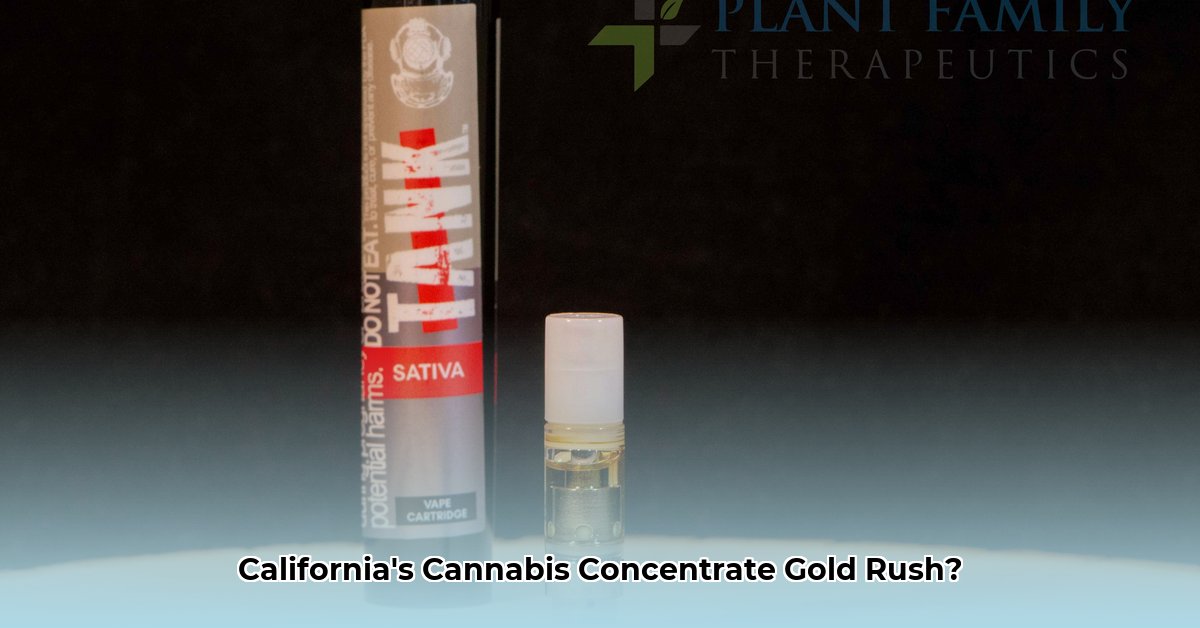
Hash Artist Farms (HAF) is carving a niche in California's competitive cannabis concentrate market, focusing on high-quality, solventless extractions. But with limited public data, a comprehensive assessment of their market position and future prospects requires careful consideration of both their strengths and the significant information gaps.
Product Focus: Premium Concentrates, Premium Price?
HAF's flagship product is Live Rosin, produced using a solventless extraction method and a unique "Living Soil" cultivation approach. This results in concentrates boasting exceptional flavor profiles and aromas. They also offer Live Resin and Distillate cartridges, broadening their appeal to a wider consumer base. While the premium quality is evident, the market's receptiveness to the accompanying higher price point remains a key question. Will connoisseurs consistently justify the premium, or will broader market success require a more price-competitive strategy?
Market Positioning and Strategy: A Niche Approach
HAF's strategy involves targeting a dual market: discerning cannabis connoisseurs (the "hash heads") seeking top-tier quality and everyday consumers attracted to convenient yet flavorful options. This dual approach has potential, but it requires careful management. Scaling production while maintaining the artisanal quality that defines their brand presents the primary operational challenge.
Strengths and Weaknesses: Data Gaps Hinder Assessment
HAF successfully communicates its brand image of quality and craftsmanship. Marketing materials underscore the premium nature of their products, appealing to the sophistication of the target market. However, crucial data points remain elusive. Precise figures on market share, distribution channels, and pricing strategies are absent. This lack of transparency hinders a complete assessment of their competitiveness and financial viability. It's a challenge to analyze their long-term prospects without essential financial and market performance metrics.
Risk Assessment: Navigating the Uncertainties
The cannabis industry is inherently volatile. HAF faces several key risks:
| Risk Factor | Likelihood | Impact | Mitigation Strategy |
|---|---|---|---|
| Regulatory Changes | High | High | Proactive regulatory monitoring and unwavering compliance. |
| Supply Chain Disruptions | Medium | Medium | Diversified sourcing and strong supplier relationships. |
| Intense Market Competition | High | Medium | Continuous product innovation and robust brand building. |
| Negative Publicity/Brand Damage | Low | High | Proactive crisis management and stringent quality control. |
These risks highlight the need for adaptability and well-defined mitigation strategies. The absence of detailed financial data, however, makes precise risk quantification challenging.
Industry Context: California's Complex Regulatory Landscape
Navigating California's complex cannabis regulatory environment is paramount for HAF's success. The California Department of Cannabis Control (DCC) 1 sets the standards, but the sheer volume of regulations necessitates continuous monitoring and compliance. HAF's small-batch approach, while contributing to product quality, might limit their ability to achieve significant scale. How will they balance artisanal production with market expansion?
Future Outlook: Potential and the Urgent Need for Transparency
Hash Artist Farms exhibits considerable potential. Their dedication to quality is a significant asset in a market that increasingly values premium products. However, without broader access to financial and market data, a conclusive assessment of their future remains elusive. Will they successfully scale their operations while maintaining quality? Only time, and a significant increase in transparency, will provide a definitive answer. Greater transparency is critical to gaining a full understanding of their market positioning and growth prospects.
Conclusion: Transparency Is Key
Hash Artist Farms' commitment to high-quality, solventless cannabis concentrates establishes a strong foundation. Their success, however, depends critically on overcoming the current information gap. Greater transparency regarding market share, financial performance, and distribution channels is essential for a comprehensive evaluation of their long-term viability and growth potential in the highly competitive California cannabis market.